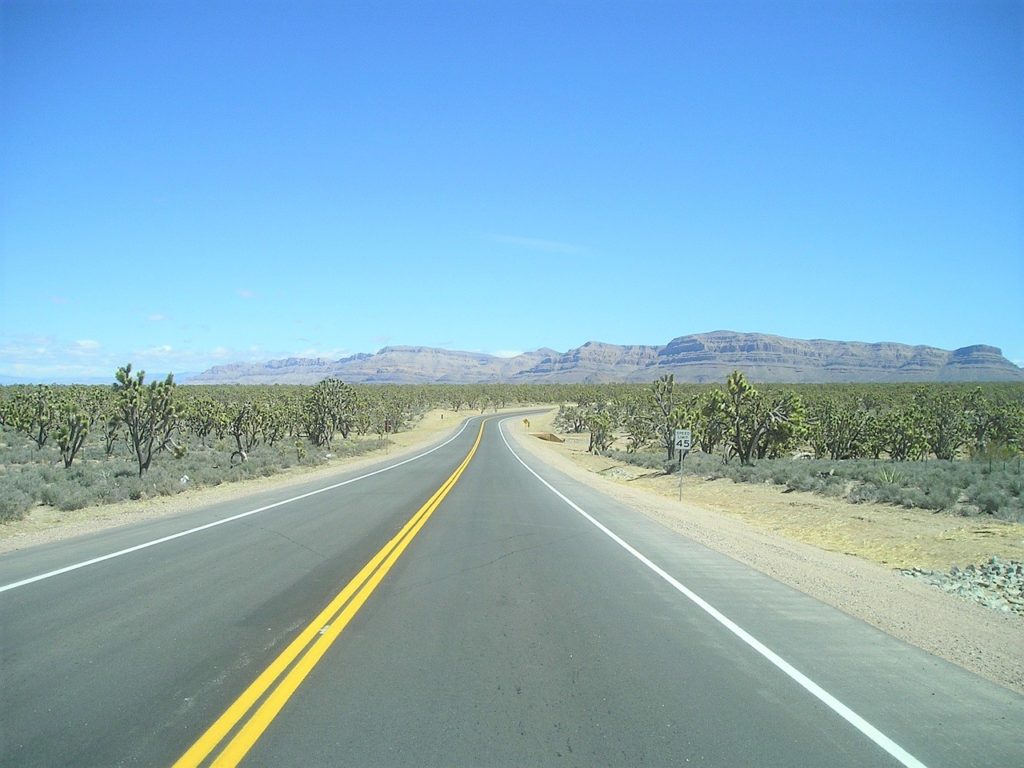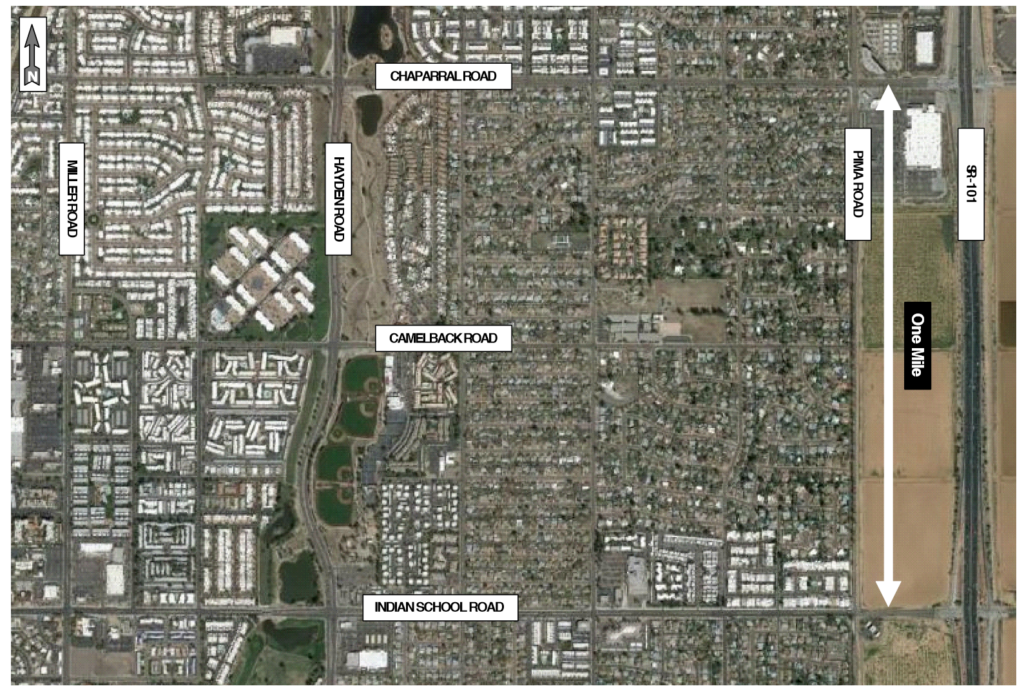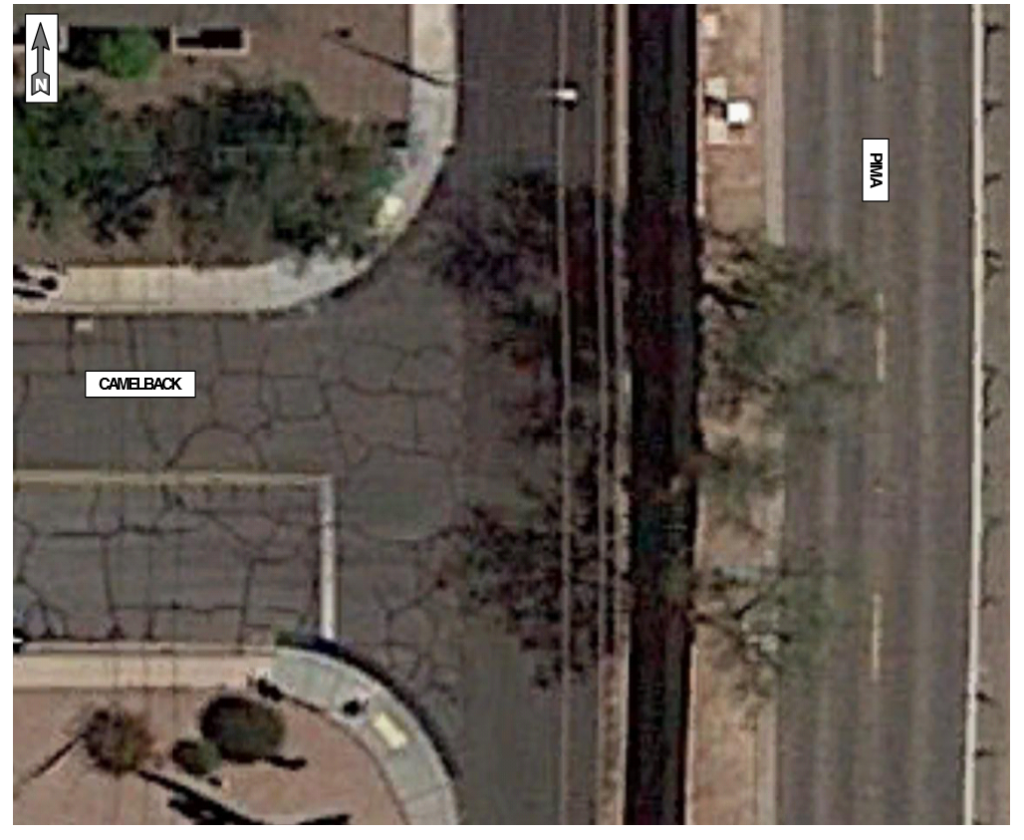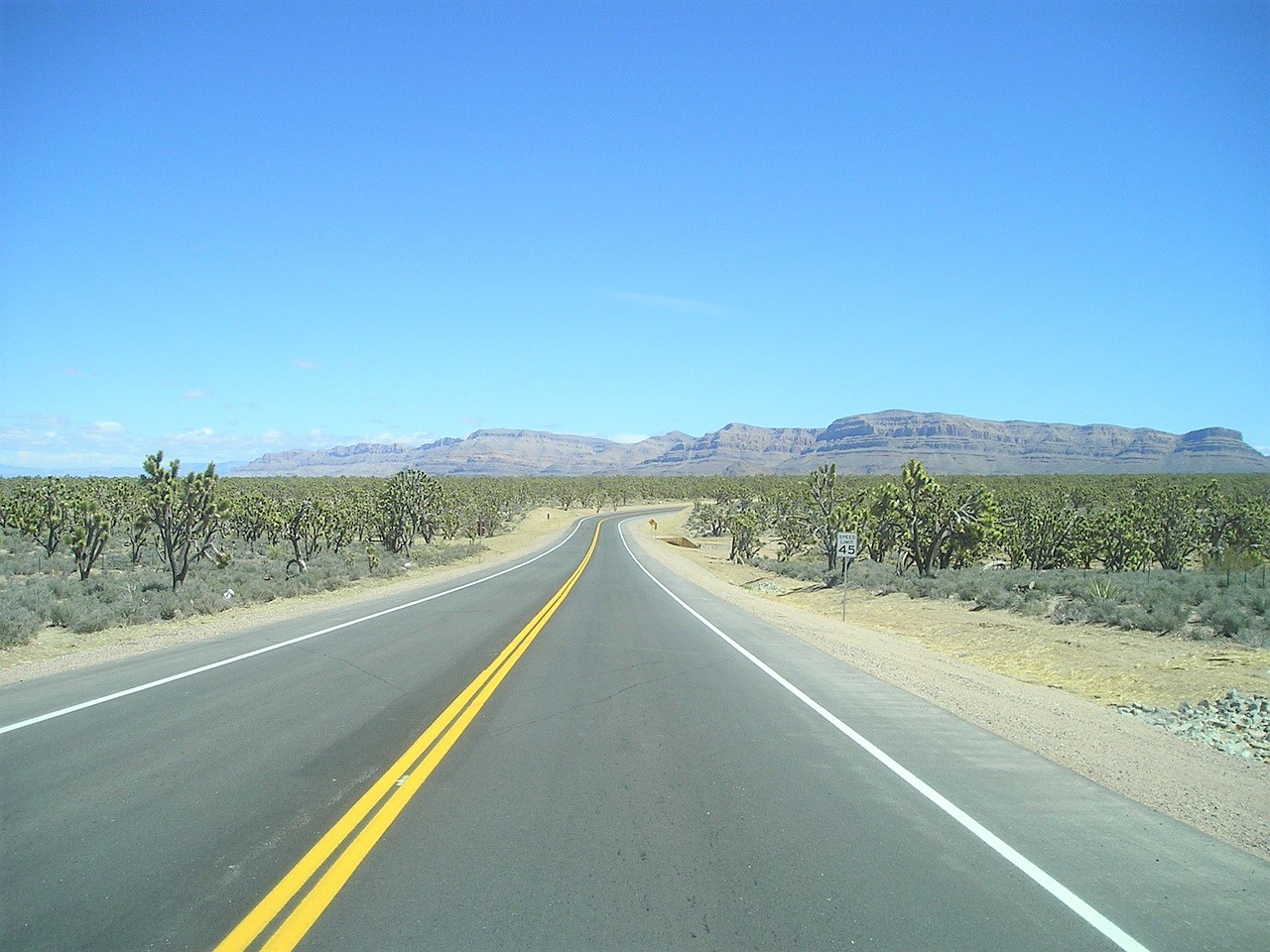
By Paul Basha, traffic engineer, Summit Land Management
Why does the Pima Freeway have an interchange on Chaparral Road, rather than Camelback Road? Chaparral Road is residential, and Camelback Road is commercial with direct connection to Fashion Square?

Typically, this question is asked out of concern for the Villa Monterey homes that front Chaparral Road between Miller Road and 78th Street. Also of concern is people who drive on a four-lane street between the Pima Freeway and Scottsdale Road except for two blocks where it is a two-lane road.

Yes, this is an unfortunate circumstance for the 52 families who live in homes facing a street that connects the Pima Freeway and Scottsdale Fashion Square. It is also an unpleasant experience for the drivers of the almost 19,000 vehicles-per-day who use Chaparral Road.
The quick answer is that freeway interchange spacing is an Arizona Department of Transportation decision, not a city of Scottsdale decision.
When SR-101 and SR-202 were designed and constructed, the national standard separation between interchanges on freeways was one mile. The current national standard is two-mile separation. The distance between Indian School Road and Chaparral Road is one mile. The distance between Indian School and Camelback Road – in Scottsdale – is one-half mile. (West of 56th Street, Camelback Road and Indian School Road are separated by one mile. There’s a large rock in Paradise Valley that forces Camelback Road to curve south.)
A separation between interchanges allows vehicles entering and exiting the freeway to not interfere with each other. When high-speed and high-volume vehicles interfere with each other, nothing good happens. We’ve all had the experience of attempting to merge onto SR-101 shuffling with vehicles attempting to exit SR-101 at the next interchange. This experience is often most unpleasant with one-mile separation, imagine this highspeed challenge with one-half of the distance – almost worthy of a Fast and Furious or Bourne Identity scene.
Scottsdale circumstances also suggest Chaparral Road as the proper interchange location. First Scottsdale Community College is on Chaparral Road – a dominant traffic source.
Another local reason to not have a Camelback Road interchange is that Camelback Road has not connected with Pima Road from its initial construction in the 1950’s, as shown in the pictures below. (Chaparral Road was originally constructed connecting Scottsdale Road and Pima Road simultaneous with the construction of the houses that currently face Chaparral Road.)


Imagine the outrage from the 57 families whose homes face Camelback Road and the families whose children attend Navajo Elementary School which also faces Camelback Road, if their street of 4,000 daily vehicles suddenly had quintuple that traffic volume. (Incidentally, the traffic volume on Chaparral Road between Miller Road and 78th Street has remained relatively unchanged from the years before the Pima Freeway was constructed until now.)
OK, so the obvious next question is why did the City of Scottsdale allow a four-lane street connecting a freeway and the most successful mall in the southwestern United States to have a two-block two-lane section with fronting homes? Well, that’s a more complicated answer.
Prior to 1985, there were three sections of Chaparral Road, totaling approximately three-quarter-mile, that had two lanes, while the remaining one-and-one-quarter-mile of Chaparral Road between Scottsdale Road and Pima Road had four lanes. Prior to the freeway opening in 1996, the City of Scottsdale widened the other two sections of Chaparral Road from two lanes to four lanes. The City had preliminary designs to also widen Chaparral Road between Miller Road and 78th Street from two lanes to four lanes. The City intended to purchase the homes facing Chaparral Road, and convert the area into a linear park (similar to the ones that now exist on McDonald Drive between 86th Street and Pima Road and on Indian School Road between Kachina Lane and 68th Street). In the late 1980’s and early 1990’s, some of the homeowners in the vicinity of this two-block portion of Chaparral Road resisted the purchase and project, and the then City Council halted the widening project. So, Chaparral Road, from Miller Road to 78th Street, remains two lanes. The good news is these houses facing Chaparral Road are less expensive than similar houses in the same neighborhood, not facing Chaparral Road.
Curious about something traffic? Contact Paul Basha at (480) 505-3931 or pbasha@summitlandmgmt.com.












